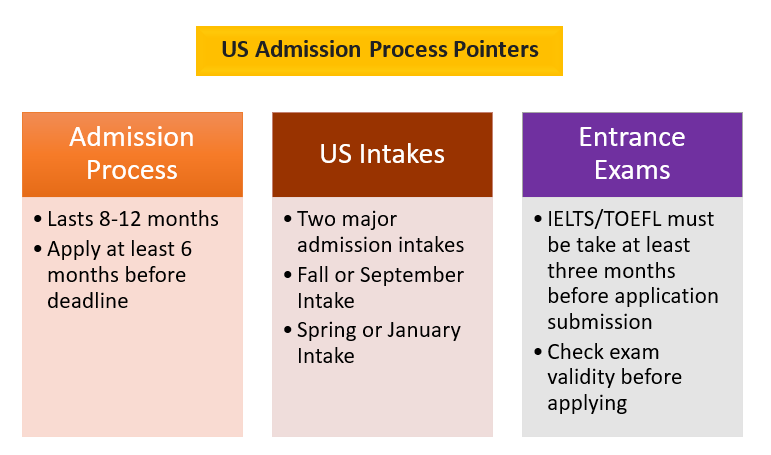Understanding the US University Admission Process

Studying in the United States is a dream for many students around the world. The US offers high-quality education, advanced research opportunities, and a multicultural experience. However, the admission process can be complex, especially for international students. This guide will help you understand every step of the US university admission process.

1. Research and Shortlist Universities
Start early — at least 12–18 months before the intake (Fall or Spring).
Factors to consider:
- Program availability
- University ranking and accreditation
- Location and campus life
- Tuition fees and scholarships
- Admission requirements
Use university websites, college ranking sites, or platforms like Common App or EducationUSA to compare options.
2. Understand Admission Requirements
Each university has its own criteria, but common requirements include:
- Academic Transcripts: High school or previous college grades
- Standardized Tests: SAT, ACT (for undergraduate); GRE/GMAT (for graduate)
- English Language Proficiency: TOEFL, IELTS, or Duolingo
- Letters of Recommendation: From teachers, professors, or employers
- Statement of Purpose/Essays: Explaining your goals, background, and reasons for applying
- Resume/CV: Especially for graduate programs
3. Prepare for Standardized Tests
Not all universities require tests, but top ones often do.
Plan to take your test 6–12 months before applying so you have time to retake if needed.
- SAT/ACT: For undergraduate studies
- GRE/GMAT: For graduate studies
- TOEFL/IELTS/Duolingo: For non-native English speakers
Tip: Check each university’s minimum required scores.
4. Write a Strong Application
An impressive application includes:
- Well-written essays: Be honest, personal, and show your passion
- Strong recommendation letters: From people who know your academic or professional abilities
- Organized resume: Highlight achievements, extracurriculars, and relevant experience
Keep the application clear, complete, and within deadlines.
5. Apply Through Official Platforms
There are different application systems:
- Common App: For many undergraduate programs
- Coalition App: Another undergrad application system
- University Portals: Direct applications on official websites
Pay attention to:
- Application deadlines (Early Action, Early Decision, Regular)
- Application fees (usually $50–$100 per university)
6. Apply for Scholarships and Financial Aid
Many US universities offer:
- Merit-based scholarships
- Need-based aid (limited for international students)
- External scholarships (e.g., Fulbright, EducationUSA, private organizations)
Submit financial aid forms like the CSS Profile or university-specific forms if needed.
7. Wait for Admission Decisions
After applying, universities will review your documents and send decisions by email or portal.
- Accepted: Congratulations!
- Waitlisted: You may get in if space opens
- Rejected: Don’t lose hope—apply elsewhere or try again
8. Accept Offer and Get I-20
Once accepted:
- Confirm your seat
- Pay deposit (if required)
- Submit required documents for the Form I-20, which is needed for the student visa
9. Apply for Student Visa (F-1)
Steps:
- Pay SEVIS fee
- Fill DS-160 form
- Book visa interview at US Embassy
- Carry I-20, passport, admission letter, financial proof to the interview
10. Prepare to Move
After getting your visa:
- Book your flight
- Arrange housing
- Attend university orientation
- Get health insurance
- Understand academic and cultural expectations
Final Words
The US university admission process may seem long, but with proper planning and research, it becomes manageable. Start early, stay organized, and reach out to admissions offices if you have questions. A successful application can open doors to a bright academic and professional future in the United States.





